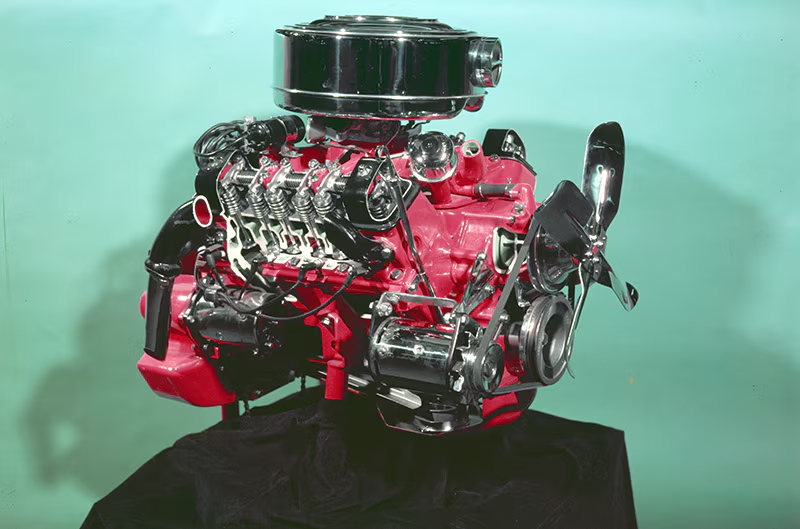Everything You Need to Know About the Ford Y-Block Engine Family
A technical overview of the Thunderbird's pioneering V8 engine, covering history, common variations, and essential maintenance tips.

The Dawn of the Ford Overhead Valve V8
The Ford Y-Block V8, named for the deep skirt that extends below the crankshaft centerline giving it a 'Y' shape, was a landmark engine. Introduced in 1954, it powered the first-generation Thunderbirds and quickly established Ford's reputation for modern V8 performance and reliability through the mid-1960s. Understanding this engine is key to owning a classic T-Bird.
I. History and Key Specifications
The Y-Block was designed to replace the venerable Ford Flathead V8. It featured a completely new overhead valve (OHV) design, laying the groundwork for all future Ford V8s.
Common Y-Block Displacements (Thunderbird Applications)
- 292 cubic inches: The base engine offered in the 1955–1957 Thunderbirds, providing reliable performance.
- 312 cubic inches: Introduced in 1956, this higher displacement version was the high-performance option and is highly desirable among collectors.
- Other sizes (239, 256, 272): Used in trucks and other Ford passenger cars, but the 292 and 312 are the T-Bird mainstays.
II. Unique Engineering and Design
The Y-Block has several distinct design features that differentiate it from its contemporaries and subsequent V8 generations.
- Deep-Skirt Block: The defining 'Y' shape increases block rigidity, which was critical for minimizing vibration and improving durability under power.
- Shaft-Mounted Rockers: Unlike later engines that used stud-mounted rockers, the Y-Block utilizes shaft-mounted rocker arms, which contributes to its unique valve train noise.
- Scavenging Issues: The internal oil drain-back system is notoriously slow, which can lead to oil accumulation in the rocker covers during extended high-RPM driving. This requires attention during performance upgrades.
Maintenance Tip: Due to the oil drain-back design, it is critical to use high-zinc (ZDDP) oil formulations to protect the flat tappet camshaft and ensure adequate lubrication.
III. Common Maintenance and Restoration Focus
While durable, the Y-Block requires specific attention due to its age and design quirks.
Essential Y-Block Maintenance
- Ignition Timing: Correct timing is crucial for performance and preventing overheating. Follow factory specifications closely.
- Valve Adjustment: Since this is a flat tappet engine, periodic valve lash adjustment is necessary to maintain proper running order and prevent excess wear.
- Vacuum Leaks: Intake manifold and carburetor base gaskets are frequent sources of vacuum leaks, which often manifest as rough idling.
Proper maintenance of the Y-Block ensures that your Thunderbird delivers the smooth, powerful cruising experience that defined American luxury in the 1950s.
Join the Club Mailing List
The shared knowledge and passion in this club are unparalleled. The technical advice alone is worth the membership fee. I've met fantastic people and kept my Thunderbird running perfectly.

